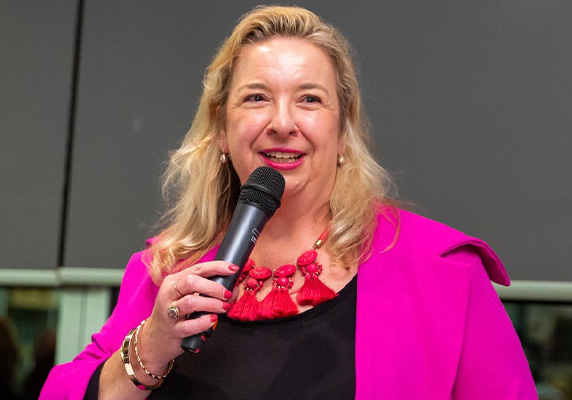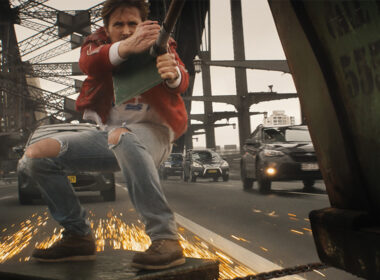No cobweb remained unspared in the process of transforming artist Margaret Olley's home-studio in Sydney into a permanent exhibition in the Tweed region in northern NSW.
Susi Muddiman OAM, Director of the Tweed Regional Gallery and Margaret Olley Art Centre, points out a tangled lace of spiderwebs that might otherwise appear undistinguished – even invisible – to the untrained eye.
They are the “original cobwebs”, she says, with a certain proprietorial pride.
Those same silken threads once draped a windowsill in the late Margaret Olley’s home-studio in Duxford Street, Paddington, before they were transported 796 kilometres up the Pacific Highway to become part of the gallery’s re-creation of the famously jampacked terrace, along with Olley’s paintings, paints, furniture, ornaments, crockery, cutlery, vases, flowers and a Proustian soupçon of her stale cigarette smoke.
The Margaret Olley Art Centre opened at the gallery near Murwillumbah in March 2014. “For years, you could still smell the nicotine lingering,” says Muddiman. “It permeated the fabric, the furniture, everything. There are actual ashtrays in there, and we still have bags of extra cigarette butts.”
The year 2023 is the centenary of Olley’s birth and a fitting time to reflect upon her legacy as a painter who, in the words of art critic Robert Nelson, “defied time, progress, change and innovation” to produce a body of work that was “quintessentially Sydney: rich, colourful, well-rounded, stress-free, not particularly challenging, though full of pictorial perspicacity”.

Many people love Margaret Olley for her intimate, perceptive still-lifes and interiors; her virtuoso draughtsmanship; her place in Australian art history as a pioneering woman; her vibrant bohemianism; and her vivacious generosity.
“There are pilgrims who come to see Margaret’s home studio,” says Muddiman. “I never knew that there were so many PROBUS groups in Australia.”
Olley’s army travels by coach but marches on its stomach. “They love scones,” she says. “There’s pretty much always a Devonshire tea.”
As for their husbands, “They like the travel part.”
The gallery received 150,000 visitors in 2021 and has turned into a major driver of economic growth in the Tweed. But it was not an easy path from Sydney to Murwillumbah, and the journey encompassed an enormous novelty cheque, a secret location, handsewn eye-masks, perplexed builders and – worst of all – the wrong colour paint.
The Tweed Regional Gallery commands a panoramic outlook over the Tweed River towards Mt Warning (Wollumbin) in Bundjalung country. Butcher birds alight on the rail around the gallery café, Apex Dining, squint acquisitively at patrons’ plates then return to the branches of the hoop pines below.

The food is fashionable but surprisingly delicious (this writer can recommend the crispy Korean chicken salad or the Reuben sandwich) and Muddiman says the view always reminds her of the archetypally Australian intonations of Arthur Stretton’s landscape of the Hawkesbury River and the Blue Mountains, ‘The Purple Noon’s Transparent Might’.
Muddiman was raised in Lismore, but her career as a gallerist carried her away from northern NSW and she was working as director of Wagga Wagga Art Gallery when her mother died and she felt the pull of home. In April 2007, she took up her position at the Tweed Regional Gallery.
“You spend 18 years desperately trying to get out of where you grow up and then, funnily enough, you move back,” she says. “I thought that I should be closer to my dad – who clearly didn’t need me at all. He still comes to my place to change my lightbulbs.”
The first iteration of the Tweed Gallery opened as a Bicentenary project in 1988, in a riverside house. The gallery moved into Stage One of its tripartite contemporary building in 2004 on land donated by former Deputy Prime Minister Doug Anthony and his wife Margot. Stage Two was opened by Margaret Olley in 2006. When Muddiman joined the gallery in 2007, “there was very much a momentum to continue building”, she says. However, like any other person who has ever suffered through a renovation, Muddiman had sworn off future construction projects. “Each job I’d been in, there’d been building involved,” she says, “and I really didn’t want to build again until the right opporunity came along.”
The gallery maintained an association with Olley, who was born near Kyogle and had lived in Murwillumbah and attended Murwillumbah Primary School. “She would often buy work and gift it to regional galleries,” says Muddiman. “Whether you knew about it or not.”
Muddiman remembers the artist as “very witty, quick, sharp and often cantankerous”. She says, “I wouldn’t want to be on the wrong side of Margaret. Ever.”
Olley passed away in 2011. The next year, Muddiman was called to a meeting with the Margaret Olley Trust, where “it became apparent that Margaret had made it her sole wish that she would donate $1 million to this gallery towards a purpose-built wing to rehouse a re-creation of her home-studio”, she says.

With this project, Muddiman didn’t have any reservations about building again.
It was initially estimated that Stage Three of the gallery would cost about $3.5 million. Money was provided by the Federal government, the NSW government and the Tweed Shire Council, and Muddiman and the Gallery Foundation and the Friends of the Gallery began their own fundraising with the prop of “a gigantic comic cheque” to represent Olley’s $1 million contribution.
The Gallery’s support organisations raised more than $1 million, and the cost of the project blew out to $5 million with inclusions to the initial plans. Muddiman says that more than 28,000 individual objects had to be taken from Olley’s Sydney home, photographed, catalogued and transported to Murwillumbah.
“The builders never really got their heads around the idea that we wanted to take something from Sydney that was falling down in parts and put it into this pristine white box,” she says, “replace what they’d taken from Sydney with brand new fittings and bring the old stuff here.”
A secret location and hand-sewn eye masks
The Trust needed to sell the terrace before the new gallery building was completed, so Muddiman had to first move everything to “a secret off-site storage in Murwillumbah that was not in a flood area”, she says. “Which narrowed down the options somewhat.”
It is difficult to keep anything hidden in a small country town with a population of 9,245 people, but Muddiman found a suitable location. As a fundraising exercise, the Friends held tours to the storeroom for viewings of Olley’s possessions. In order to maintain secrecy, coach passengers were required to wear hand-sewn eye masks (decorated with embroidered closed eyes as a keepsake of the tour) before the bus driver “drove them all around the town to disorientate them,” says Muddiman.
Stage Three was opened in 2014 by Olley’s friend, the then Governor General Quentin Bryce CVO. The house had been “much quicker to unpack and re-create than it was to pack up in Sydney,” says Muddiman.
The distinguished gallerist Edmund Capon AM OBE described Olley’s home-studio as some sort of archaeological dig site, and its re-creation looks something like a 20th century artist’s life in objects as envisaged in premonitions by Bruegel the Elder and Hieronymus Bosch. There is stuff crammed everywhere.
Some of the more accessible objects are affixed with museum gel to the surfaces on which they stand. “I was really worried about people taking things,” says Muddiman. “But hilariously – and very charmingly and endearingly – people leave things for Margaret.”
Visitors make gifts of chocolate for Olley, or write notes thanking her for her art.
A paint tray in the oven
The radio station Classic FM hums in the background, as it played continually when Olley was alive. There is little distinction between living and working areas, and trays of oil paints offer a rare cohering motif among the clutter.
Olley once said, “I like working in the kitchen, much to the amusement of my friends. They come and say they could tidy it up. And I say, “Excuse me! It’s a very unique kitchen. It’s a studio first and a kitchen second.”’
Muddiman can confirm this assertion through first-hand observation. She points to a platter of squeezed and twisted tubes. “Margaret once asked me to get a meringue pie out of her oven,” she says. “I opened it, and that paint tray was in there.”

Muddiman did all she could to preserve the integrity and authenticity of the project but bemoans the fact that the interior walls of Olley’s living room in the re-creation were not the right colour to start with.
“We painstakingly scraped paint colours off the original house in Sydney,” she says, “and I gave the samples to the builders to match the colours. But then they didn’t use all the paint-matches, because while they were at the house getting all the building fixtures out, they found tins of orange paint around the place – so they decided to use that paint.”
She waves at a wall.
“It was completely the wrong colour,” she says. A re-paint of the Hat Factory in the famous ‘Olley Orange’ was quickly completed.
The Margaret Olley Art Centre is not the only focus of the gallery, which also holds major collections of Australian portraiture – but it is the most impressive feature. Among its admirers are art lovers and artists alike. The latter sometimes envy the meticulously curated tribute to such a vital force in Australian painting.
“This sounds terrible,” says Muddiman, “but what I’ve found really interesting over the years since it has opened is the number of artists who are still alive, hoping something like this will happen for them. It’s extraordinary.”




